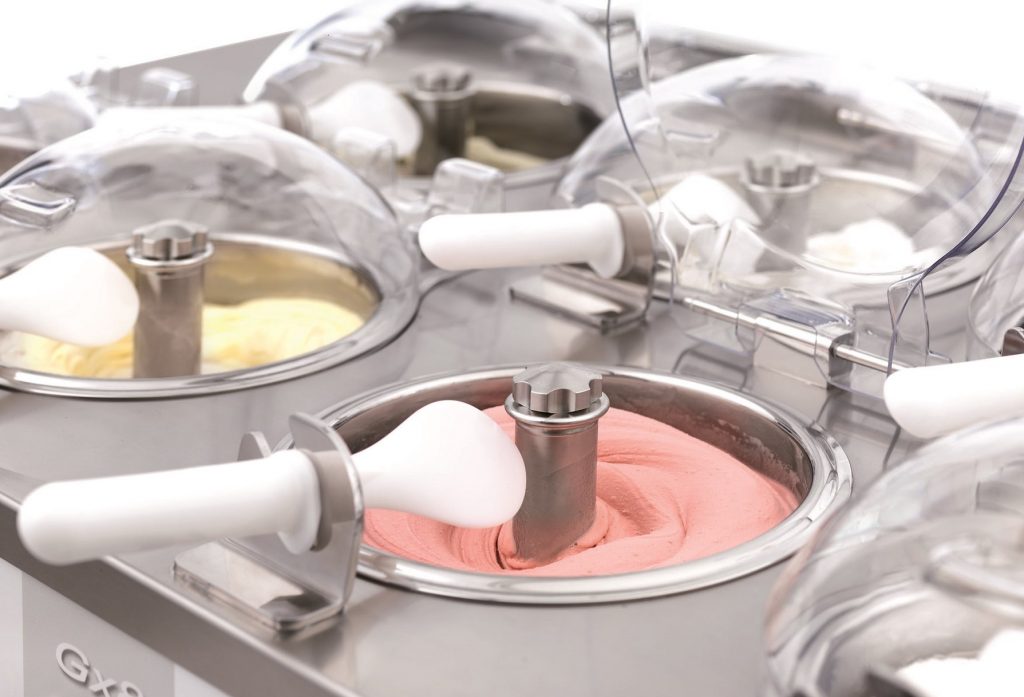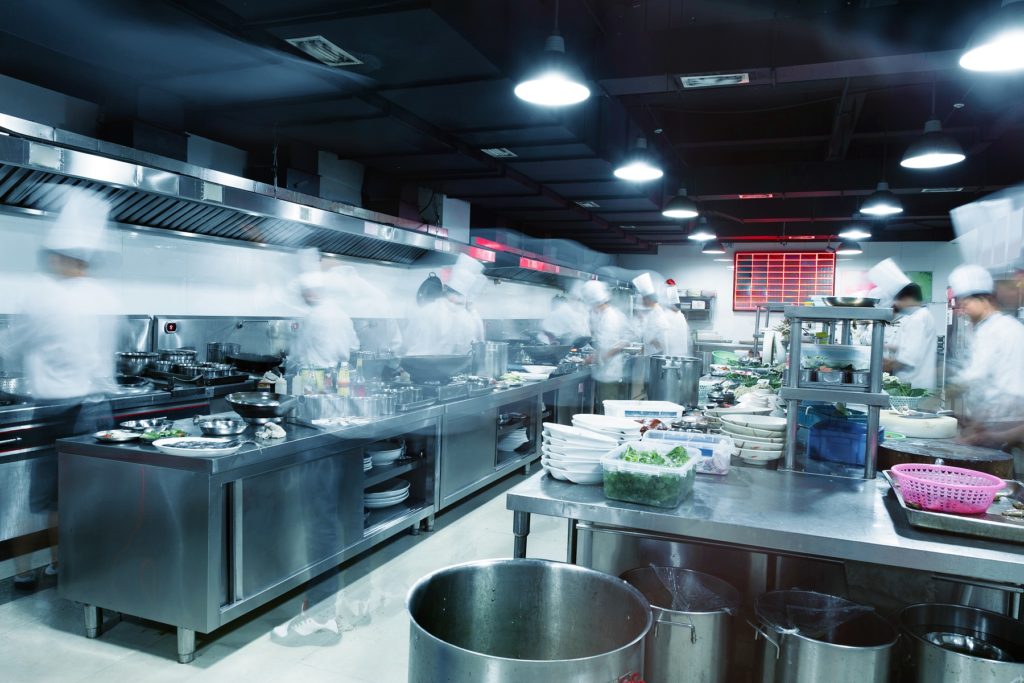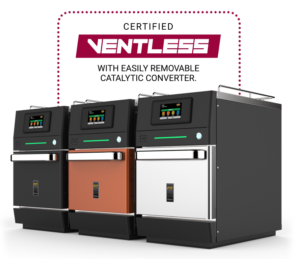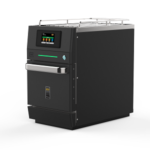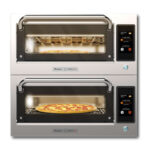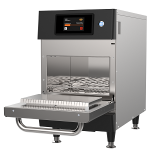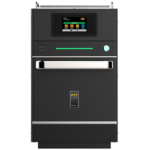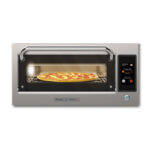Welcome to our ultimate guide to choosing the right high speed oven for your business.
In this guide we will explain the differences between the different models of high speed oven, the principles on how they work, and the applications which they’re best suited for.
Lets get started…
What is a High Speed Oven or Rapid Cook Oven?
There are many terms which get used to describe high speed ovens like those manufactured by Pratica. These include; accelerated cooking, rapid cooking, speed cooking, microwave combi-cooking, and others.
A ‘proper’ high speed or rapid cook oven utilises multiple heating methods to reduce the cooking time of products ‘speeding up’ the cooking process. These heating methods are usually a combination of a number of the following heat sources; infrared heat, high speed hot air, impinged hot air, convection heat, and microwave energy.
A rapid cook oven will use a number of these heat sources at the same time to speed up the cooking process. For example, combining microwave energy to heat the inside of a product while hot air crisps and browns the outside. As a result, two processes are turned into one which saves time.
The majority of rapid cook ovens are ventless. This means that they do not require expensive extraction hoods like regular ovens. They achieve this due to the internal catalytic convertor. The catalytic convertor scrubs the air in the cooking chamber as it’s recirculated around the oven. It removes any grease, smoke and VOC’s (volatile organic compounds) from the cooking chamber, combusting it into harmless compounds before it’s vented into the working environment. As a result, rapid cook or high speed ovens are ideal for use in front of house applications like coffee shops and cafes.
View Our Range of TurboChef Rapid Cook Ovens
What Types of High Speed or Rapid Cook Oven are there?
There are three types of high speed oven.
The most common type combines microwave energy with high speed impinged air. The model which falls into this category is the Pratica Copa. It rapidly heat and toast products and are used in a lot of high street coffee chains to quickly heat and toast breaded products like paninis, toasties and filled croissants. These are the fastest type of speed oven and are designed for the fast reheating of products, usually in a front of house application.
How does a High Speed Oven Work?
This section will explain how the high speed ovens which use microwave and impinged air work.
Firstly lets breakdown all of the ways heat is applied to the item is being cooked…
-
Temperature – rapid cook ovens typically operate at 260-270°C. This is the temperature of of the air in the cook chamber.
-
Impinged Air – Hot air is forced into the cooking chamber through impingement plates in the top, and sometimes the bottom, of the oven. These are a series of small holes which focus the hot air evenly throughout the chamber and directly on to the food. The speed of the fans are controllable. The faster the air moves, the greater the browning/toasting effect.
-
Convection – The heat of the oven will naturally convect heat to the product being cooked regardless of the air speed. This will cook products like a conventional oven.
-
Infrared radiation – the heating element used to heat the air in the oven will naturally radiate infrared energy. In some models, like the Copa and the Forza STi, there is an additional infrared or IR element in the bottom of the oven. This radiates heat directly to the underside of the product just like the grill in your oven at home.
-
Microwave – The microwave in a rapid cook oven is the same as that found in a normal microwave oven. It uses high frequency radio waves to heat the water molecules in the product generating heat ‘from the inside out’ (which isn’t completely true).
High speed ovens use a combination of these heat sources, the model of oven determines which methods are used:
The Pratica ovens only have one fan motor which controls the air flow from the top of the oven. The Copa has an additional IR element in the bottom of the cook chamber which provides heat to the underside of products. The impinged air and IR heat is combined with microwave. The microwave power can be set to whatever strength is necessary to heat the product correctly.
All types of high speed oven are programable. This allows the user to create unique recipes or pre-set cooking profiles with different air speeds, microwave powers and time duration. Once the profiles are set up for individual products, and this could be up to 1000 depending on the oven, all the operator needs to do is place the item in the oven and press the right button. The oven will automatically cook the item to the pre-programmed specification which ensures consistent, predictable results every time regardless of the staff member on duty.
The settings on all rapid cook ovens can be downloaded via USB and transferred to other ovens quickly and simply. This makes them ideal for multi-site operators who need consistent results across their estate.
View Our Range of Pratica Speed Ovens
Why is a High Speed Oven Faster?
In essence, high speed ovens are faster than conventional ovens ovens because they can transfer their heat to the item being cooked far more efficiently which reduces the cooking time. This is why the non-microwave models are up to five times faster. When you add microwave to the mix, the heat transfer is increased significantly. As a result rapid cook ovens can be up to 10 times faster than conventional methods.
What can you cook in a High Speed Oven?
They are ideally suited for front-of-house applications like cafes, coffee shops and canteens where they are used to quickly heat and toast menu items to order.
The internal catalytic convertor which gives the ovens their ventless credentials can only cope with low levels of excess grease. They’re not suitable for cooking raw greasy proteins like bacon, sausages or burgers from raw as this can potentially create excessive grease and smoke which will overwhelm the catalytic convertor which in turn will invalidate its ventless-ness. If the items are pre-cooked, then reheating them through a speed oven is ideal as the microwave will get the core up to temperature quickly while the hot air crisps the outside giving it a freshly cooked feel and taste.
High speed ovens are best used to reheat chilled products but items can also be cooked from frozen. This is very product dependent. Large or dense items like lasagne or jacket potatoes are not recommended to be regenerated from frozen. Rapid cook ovens operate at high temperatures, the outside of the product can over cook or dry out before the centre of the item has reached a suitable temperature. Smaller frozen products like potato wedges are fine, the heat can penetrate quickly without damaging the outside of the item.
It’s not recommended to heat wet products like soups, stews, or baked beans. The temperature which the ovens operate at can have a negative effect on these types of product, causing them to skin over or dry out damaging them. They also need to be heated in a suitable container which is both oven and microwave proof. Wet products are best heated in a conventional microwave.
Whatever you choose to cook or heat in your rapid cook oven you need to be consistent. The cooking profiles will be set up for specific items, if you change the size or specification of the item it may change how it heats or toasts. Consistency is the key… if you change your products you may need to adjust how it cooks.
What cookware can you use in a Rapid Cook Oven?
The combination of high temperatures and microwave can present some challenges when it comes to cookware in rapid cook ovens.
The latest generations of rapid cook oven can be used with metal cookware. This cookware needs to be of good quality and a reasonable thickness. Cheap thin trays can buckle and cause arcing against the rack and sides of the oven. It is best to avoid highly polished, shiny trays as this can reflect the microwave energy away from the item being cooked which in turn will elongate the cooking time. The best trays are the ones which are supplied with the ovens or those which are very similar. These are usually dark anodised aluminium. The dark colour helps them heat up faster without reflecting any of the microwave energy. It is important to use a tray which is suitable for the product being cooked, for example, don’t use a 1/1GN tray to cook one chicken breast, use a small tray.
The big no no is aluminium foil or foil trays. Foil is too thin and will absorb too much energy which can lead to arcing in the oven which will damage the rack or sides of the oven. In extreme circumstances, the foil can melt, leaving metal in the item, or even start to burn. In short, don’t use foil!
A popular choice is PTFE coated non-metallic trays. These are microwave inert and heat up/cool down quickly. This makes them ideal for use in cafes and sandwich shops as it removes any risk when it comes to handling hot trays, preventing any secondary risk of burns. The downside to these trays is that they do wear out overtime and can be cut easily so they need looking after.
Oven proof ceramics and Pyrex can be used in rapid cook ovens. They are good for heating up items like pasta bakes and shepherd pies but you need to be mindful that the dish will get very hot during the cooking process and will require careful handling.
Whichever cookware you choose, it is important to stick with it. The cooking tray has an effect on the cooking profile. If you change from a metal tray to a Teflon one or vice versa, you may experience inconsistency’s with the finished results. Rapid cooking is all about being consistent!
Our High Speed Ovens
Taylor UK has over 13 years of experience supplying rapid cook and speed ovens. Our expert sales managers and culinary team can help you with everything you need to make sure you get the perfect speed oven for your business.
Pratica Copa Express – The Copa is the ideal oven for front-of-house applications. It has two magnetrons providing powerful, consistent microwave energy. Top impinged air for fast browning and a bottom IR-element which ensures a crisp bottom. The touch-screen controls are intuitive and easy to use making it perfect for skills limited operators. Learn more about the Copa here >>>
Pratica FIT Express – The FIT is available in two configuations, single mag version is less powerful but can be plugged into a standard 13amp plug socket making installation easy and is ideal for smaller operators. The twin mag version requires a dedicated 32amp power supply which can be either single or three phase. The Twin mag version is more powerful, has faster recovery rates and can heat larger products. Learn more about the FIT here >>>
Pratica Forza STi – The Forza STi isn’t strictly speaking a rapid cook oven as it doesn’t utilise microwave as one of its cooking methods. That being said, it used high speed impinged air and infra red heat to bake pizzas and other dough based products faster than conventional methods. The Forza STi id fully programmable like other rapid cook ovens and is also ventless allowing it to be installed almost anywhere. Learn more about the Forza STI here >>>
Request a FREE Consultation on Speed Cooking Today
Maintenance & Cleaning of a High Speed Oven
The combination of hot air and microwave cooks and heats food quickly but it can also bake on dirt, grease and grime just as quickly. It is therefore important to keep on top of cleaning when it comes to speed ovens.
Rapid cook ovens should be thoroughly cleaned on a daily basis. This process is split into two stages; the beginning of the day and the end of the day.
At the beginning of the day, before the oven is switched on, the internal surfaces of the clean oven should be coated with an oven guard protector. This creates a barrier which the grease and grime sticks to.
At the end of the working day, once the oven has gone through its cool down process, the oven needs to be cleaned with a suitable non-caustic oven cleaner. This cleaner breaks down the guard product bringing the dirt and grime with it. Once cleaned the oven needs to be wiped with a wet cloth to remove any residues. The products which you choose to cook will determine how dirty the oven gets. Greasy and raw products will make the oven harder to clean compared to breaded products.
It is really important to use approved non-caustic cleaners. Regular corrosive oven cleaners can damage internal components like the catalytic convertor and my invalidate your warranty.
Approved rapid cook oven cleaners can be bought online at HTG Extras – Shop Now >>>



